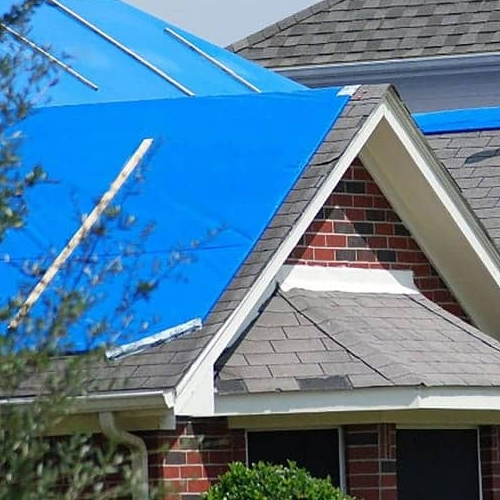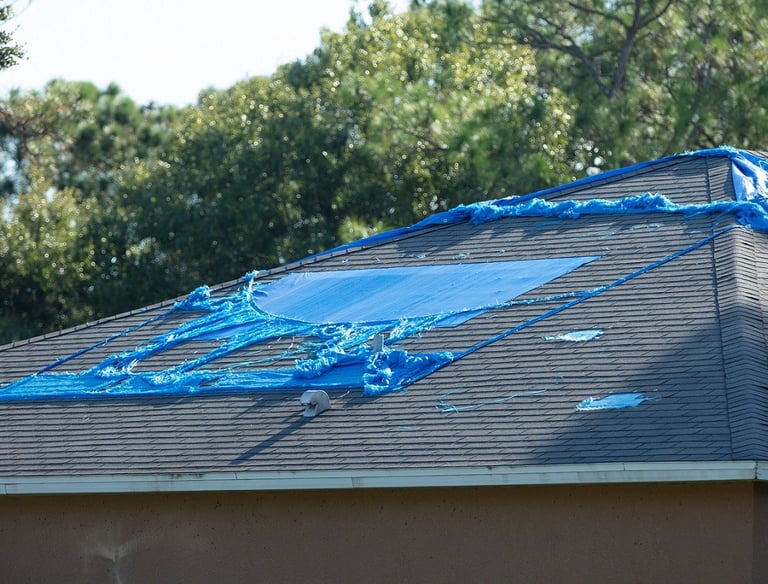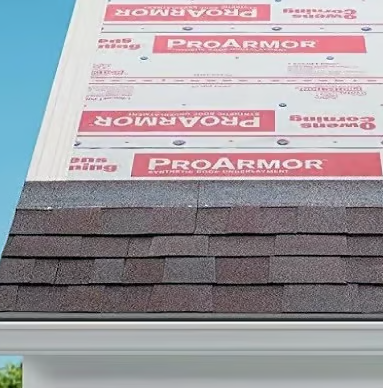
Roof Tarping
We Do NOT Use Blue Tarps!
Roof tarps are not permanent solutions, nor are they suitable for a period of more than 14 days, as emphasized by the U.S. Department of Housing and Urban Development (HUD). In addition to causing more damage to your already leaking roof, tarps begin to deteriorate over time from the sun and rain, causing them to literally shred apart and litter yours and your neighbor’s yard with debris.
“Blue roofs”, as they’re known by public emergency agencies, claim to be mildew resistant although we beg to differ. Due to their easy accessibility and fairly low costs, many homeowners seek to install them themselves or with the help of a handyman after noticing a roof leak in their home. The thought process makes sense:
Notice a roof leak in your home. Run and out and purchase a tarp thinking you’re going to prevent further damage to your home’s interior by stopping the roof leak.
But, what homeowners don’t consider is the further damage the tarp is actually causing on the exterior to the roof itself.
In closing, tarping your roof with a blue tarp causes more problems than it solves. The biggest issue is that it weakens shingles or tile roofs with temperature shifts. Also, if the tarp isn’t installed perfectly smooth, it may potentially hold small pools of standing water. This can then cause further problems such as mosquitos breeding in these pools of water or mold growth.
Blue Tarp Roof






Deteriorating Blue Tarp
Synthetic Underlayment
When exposed to the elements, they don’t wrinkle and tear around fasteners like blue tarps. Endures up to 180 days of UV exposure & repels water.
Synthetic underlayment is tough, durable material that resists small tears and stands up to boot traffic.
Synthetics have extremely high tear strength compared to blue tarps. This means less tearing around fasteners during installation and fewer opportunities for water infiltration.
Synthetics repel water while felt products absorb water. Most homeowners like the idea of having a product that sheds water as their secondary water protection barrier on their roof instead of a sponge.
Synthetics are not a food source for mold like paper based #15 and #30 felt paper or blue tarps.
What Our Contractors Use
How Much Does It Cost?
Synthetic Underlayment
Steps to Take for Roof Tarping
Contact Adviser1 Promptly: Schedule an inspection as soon as possible. The sooner you have a professional evaluate the situation, the quicker you can implement protective measures.
Assessment and Recommendations: Adviser1's contractors will inspect your roof and provide a detailed report on the damage. They will recommend the best course of action, including whether tarping is necessary.
Tarping Process: If tarping is advised, Adviser1's contractors will ensure it is done correctly. Proper tarping prevents further water ingress and provides temporary protection until permanent repairs can be carried out.
Roof tarp pricing is based on a service fee specific to your type of roof, the square feet of tarp needed, and safety hazards related to the roof surface (steep or high roof)
Our contractors provide an upfront quote after they view the property, and then they take payment ONLY after services are rendered. In addition to providing the temporary repair itself, they also provide electronic images of the damages for you to provide to your insurance carrier.
In conclusion, seeking a professional inspection from Adviser1 is a prudent step in managing roof damage. Our expertise can help you protect your home efficiently and safely.
